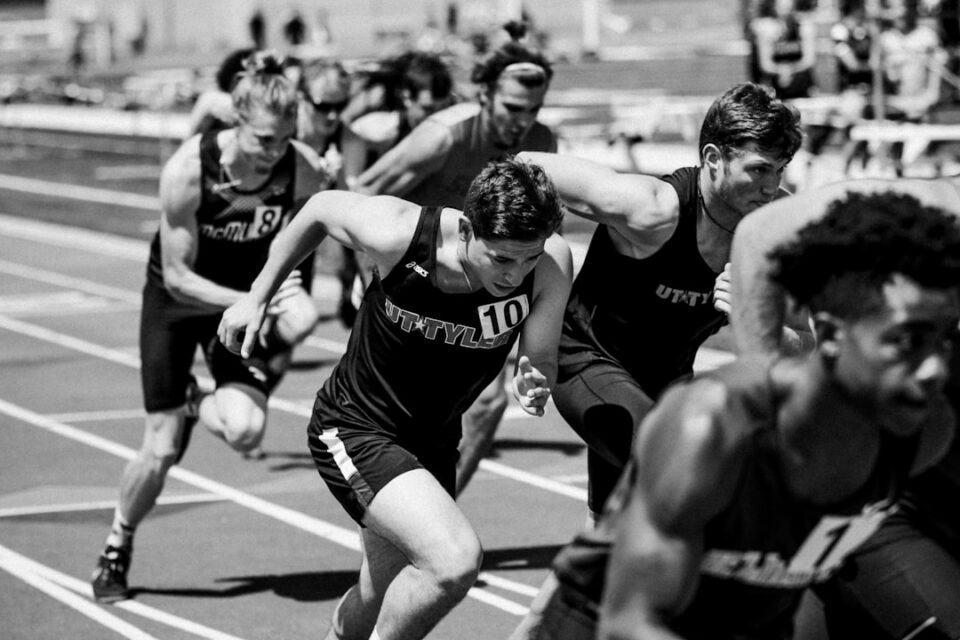Tips for Improving Your Jumping Ability in Athletics
Jumping is a fundamental skill in many sports, particularly athletics. Whether you are involved in long jump, high jump, or basketball, having the ability to jump higher can give you a competitive edge. Improving your jumping ability requires a combination of strength, power, and technique. In this blog post, we will discuss some effective tips to help you enhance your jumping performance.
1. Strengthen your legs: Building strong leg muscles is essential for improving your jumping ability. Include exercises such as squats, lunges, and calf raises in your training routine. These exercises target the muscles in your thighs, hamstrings, and calves, which are key contributors to generating power during a jump.
2. Plyometric training: Plyometric exercises focus on explosive movements and help develop power in your muscles. Incorporate exercises like box jumps, depth jumps, and jump squats into your workouts. Plyometric training not only enhances your jumping ability but also improves your overall athletic performance.
3. Core strength: A strong core is crucial for stability and generating power during a jump. Add exercises like planks, Russian twists, and medicine ball throws to strengthen your core. Remember, a strong core not only helps you jump higher but also enhances your overall athleticism.
4. Flexibility training: Poor flexibility can hinder your jumping ability. Incorporate regular stretching routines into your training to improve your range of motion. Focus on stretching your hamstrings, hip flexors, and calf muscles. Dynamic stretching, such as leg swings and lunges with a twist, can also be beneficial before your jump training sessions.
5. Jump technique: Pay attention to your jump technique as it can significantly impact your performance. Practice proper take-off and landing techniques to maximize your jump height. Work on creating a strong arm swing, utilizing triple extension (ankle, knee, and hip joint), and maintaining a slight forward lean during the jump. Seek guidance from a coach or watch professional athletes to understand and improve your technique.
6. Specificity: Train specifically for the type of jump you want to improve. If you are involved in long jump, practice running techniques, as well as incorporating approach leaps into your training. Similarly, if you aim to improve your vertical jump for basketball, include exercises such as depth jumps, box squats, and jump lunges.
7. Interval training: Adding interval training to your workout routine can boost your athletic performance and jumping ability. Incorporate activities like sprinting, cycling, or jumping rope into your workouts. These exercises help improve your cardiovascular endurance, which is beneficial for explosive movements.
8. Rest and recovery: Adequate rest is crucial for the body to recover and adapt to the training stimulus. Include rest days in your training schedule, as well as prioritize quality sleep to promote optimal recovery. Overtraining can lead to injuries and hinder progress, so ensure you balance your workouts with sufficient rest and recovery time.
9. Nutrition: Proper nutrition plays a vital role in improving your jumping ability. Fuel your body with nutrient-rich foods, focusing on carbohydrates for energy, protein for muscle repair and development, and healthy fats for overall well-being. Stay hydrated by drinking enough water to optimize your performance.
10. Mental focus: Lastly, don’t neglect the power of mental focus and visualization in improving your jumping ability. Stay focused during your training sessions, visualize successful jumps, and build confidence in your abilities. Positive thinking can significantly impact your performance and help you reach new heights.
Improving your jumping ability takes time and consistent effort. Incorporate these tips into your training routine, stay motivated, and be patient with your progress. With dedication and practice, you can take your jumping skills to new heights and excel in your chosen athletic discipline. Remember, every successful jump begins with the decision to take the leap.

